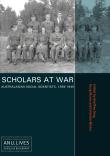'Camilla Wedgwood, anthropologist and educationalist (1901–55), spent much of the Pacific War and its immediate aftermath in Papua New Guinea—the scene of her field research in anthropology in the previous decade. Tough yet in some ways timid, mannish yet maternal, intellectually and physically tireless yet oddly dispersed in her enthusiasms, she seemed a paradoxical personality. Born at Newcastle-on-Tyne, UK, Camilla Hildegarde Wedgwood was the fifth of seven children of Josiah Clement Wedgwood, later first Baron Wedgwood (1872–1943), a long-time Member of Parliament, and his first wife, Ethel Kate Bowen (d. 1952), daughter of Charles (Lord) Bowen, a lord of appeal in ordinary. Descended from Josiah Wedgwood the master potter, the Wedgwoods belonged to what Noel Annan called the ‘intellectual aristocracy’. The Wedgwood and Darwin families were intertwined. Geoffrey and Maynard Keynes were related to the Wedgwoods by marriage as were the descendants of T. H. Huxley; Dame Veronica Wedgwood OM, the historian, and Ralph Vaughan Williams, the composer, were cousins. After attending the Orme Girls’ School not far from the family kilns in Staffordshire, Camilla followed her two brothers to the progressive Bedales School in Hampshire before studying English and Icelandic literature at Bedford College, University of London, from 1918. Here she developed a lifelong interest in Old Norse and in such old-English sagas as Beowulf. Her rugged, independent bearing, as well as her sympathy for ‘primitive’ peoples, earned her the sobriquet of ‘The Ancient Briton’. In 1920 she moved to Newnham College, Cambridge. Reading for the tripos in English and Anthropology, she completed each stage with first-class honours, qualifying as MA in 1927 (the university did not award degrees to women until 1948). She was trained as an anthropologist by A. C. Haddon and her lecturers included W. E. Armstrong, former Acting Government Anthropologist in Papua. (Introduction)



